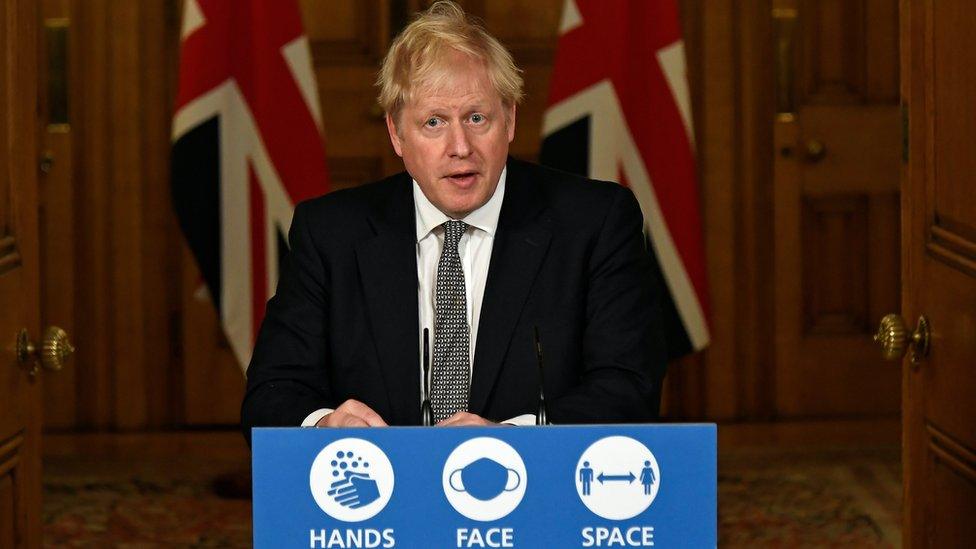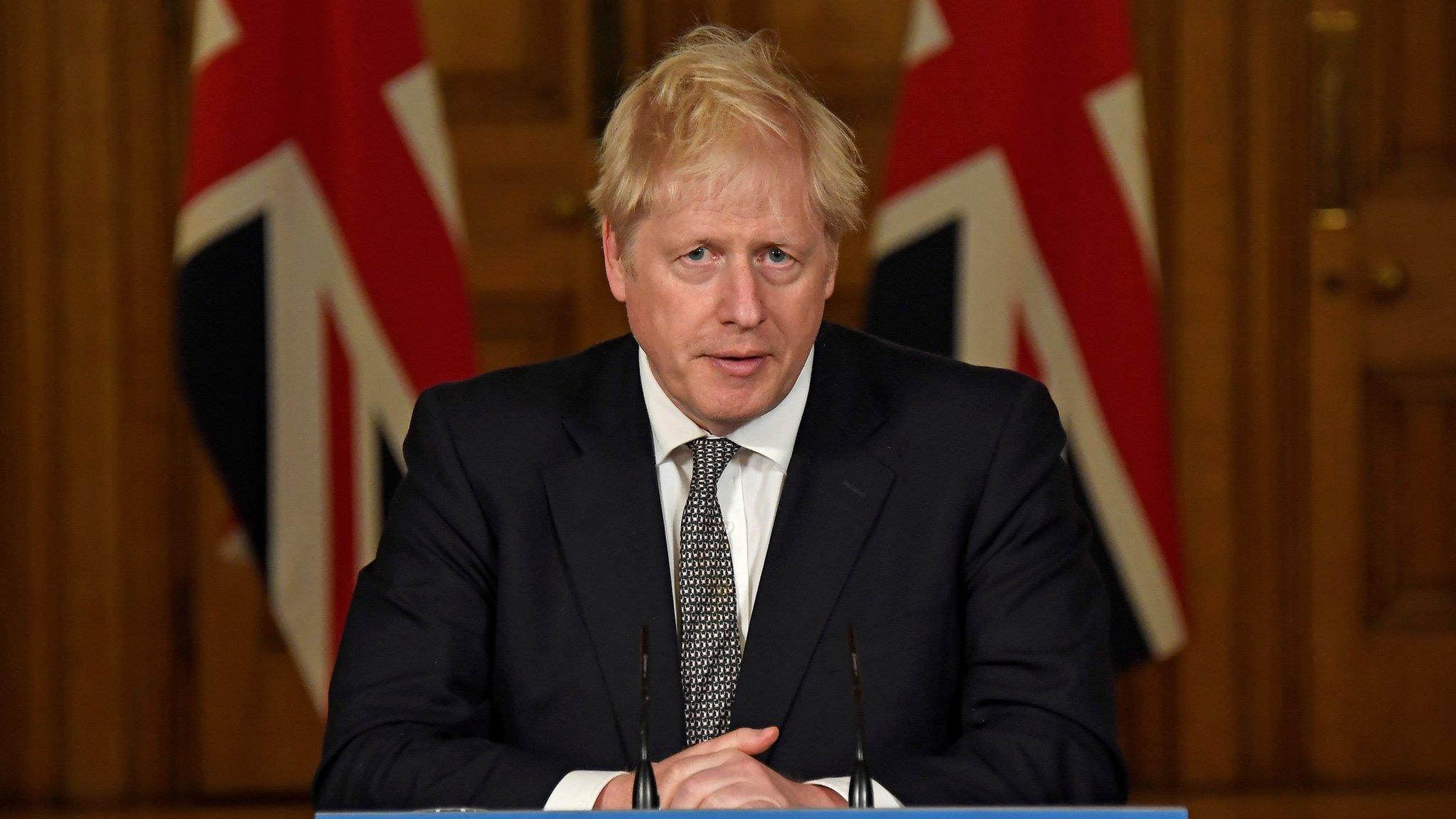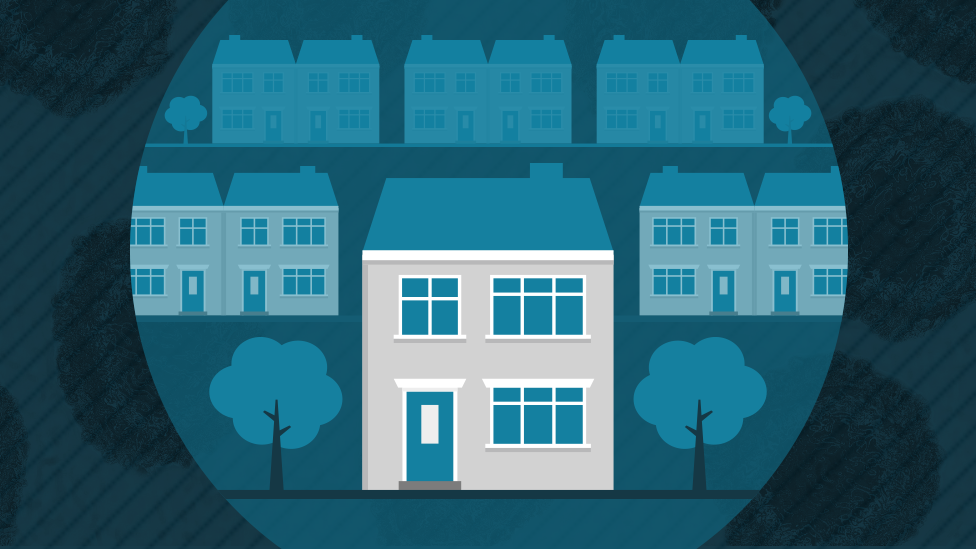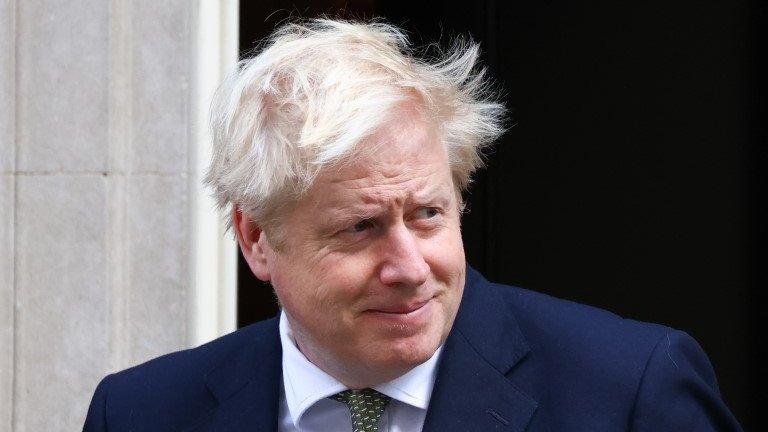Coronavirus: Boris Johnson launches the nuclear option he swore to avoid
- Published


Nuclear weapon. Misery. Disaster. That's what he called it. And yet that is what he has done.
Boris Johnson made absolutely no bones about his reluctance to act to instruct England to close its doors again in recent weeks.
On Saturday evening, he was at pains to claim that lockdown 2.0 in England will be not nearly as restrictive as first time round.
But again, the prime minister stood at the lectern and told us to "stay at home, protect the NHS, save lives".
Again, he warned the public that if the government didn't take draconian action then the health service would have to turn patients who need care away.
Again, he and his top scientists presented evidence that the country could face an intolerable number of deaths during a wave of the pandemic that has turned our lives upside down in the last eight months.
The prime minister's defence to the country, just squeezing a televised public briefing into the Halloween prime time TV schedules after a few hours of delay, was a well-worn political standby - when the facts change, it is the right thing to change course.
It is true that data shared by the government on Saturday points to a prognosis that has worsened.

One key document shows several UK daily death projections by different modellers, compared with the first wave and the government's "reasonable worst-case scenario" - which was seen in a report in August

The UK is not the only country that has seen the progress of the disease go the wrong way, with France and Germany acting in recent days.
But it is also true that Mr Johnson cannot say for a second that he was not warned.
More than six weeks ago, not just the opposition, but some of Mr Johnson's own ministers, and some of his own advisers were pushing for another limited lockdown to try to slow the spread of the disease.
Conversations were active in government by the third week in September about the possibility of taking national action as the second wave was developing, potentially in a more serious way than the scale of the pandemic in the spring.
The PM decided at that point to plump instead for a local lockdown system, in the hope of controlling the spread without taking a hammer to the whole of the fragile economy only starting to get back to life.
He chose to side with the Treasury and many newly assertive Tory backbenchers.
As that tier system stuttered into life, complete with clashes with the local leaders around the country, conversations continued on and off about the possibility of a short, sharp, limited lockdown, or "circuit-breaker".
Still, publicly, while those discussions continued, day after day ministers insisted the tier plan could and would work.
The decisions were never simple. There was a logic to trying to resist taking more draconian action like this to try to limit the damage to the economy, the other terrible effects of lockdown.
But Mr Johnson's original judgement now seems like it was a political accident just waiting to happen.
Lockdown 2.0 is not an exact replica of first time round. There are notable differences - with schools, colleges and universities staying open, a fixed time limit of a month and, perhaps the most vital of all, the hope of a rapid acceleration of mass testing to make life with the virus more liveable.
The picture is also different in different corners of the UK.
Scotland is sticking to its new tiered approach for now, where there have been tighter regional restrictions for a while. Northern Ireland and Wales are also both already in forms of a second lockdown, with plans already for their exit.
But something is very familiar. Having waited until this moment, the PM has again, just like in the spring, left himself open to the accusation that he delayed the inevitable, and the timing of his decisions is costly, perhaps to lives, and likely the government's own reputation.


- Published31 October 2020

- Published26 January 2022

- Published31 October 2020

